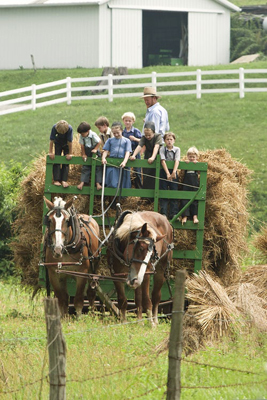5585 Guilford Road • Madison, WI 53711-5801 • 608-273-8080 • Fax 608-273-2021
www.agronomy.org
Twitter | Facebook
NEWS RELEASE
Contact: Hanna Jeske, Associate Director of Marketing and Brand Strategy, 608-268-3972, hjeske@sciencesocieties.org
What’s the difference between hay and straw?
Oct. 8, 2018 – When is an autumn hay ride not a hay ride? The October 7th Sustainable, Secure Food blog explains the difference between hay and straw—and what you’re really sitting on during those farm adventures.
 “Straw refers to the plant material that is left over after grains like wheat and barley are harvested,” explains Mike Richardson, a professor in the Department of Horticulture at the University of Arkansas. “It is usually considered a waste product and is harvested in bales and used for other purposes.” Animal bedding and biofuels are two uses of straw.
“Straw refers to the plant material that is left over after grains like wheat and barley are harvested,” explains Mike Richardson, a professor in the Department of Horticulture at the University of Arkansas. “It is usually considered a waste product and is harvested in bales and used for other purposes.” Animal bedding and biofuels are two uses of straw.
As for hay? “When we talk about ‘making hay,’ we are really talking about making something that an animal can eat. Hay is usually gathered up into bales, and stored for the animals to eat during the winter when the grass is not growing.” Hay comes from nutritious sources like ryegrass or alfalfa.
Few farmers would sacrifice animal feed to pad a wagon ride. So while “hay ride” is more accurately a “straw ride,” Richardson is a realist: “This fall, when someone asks you to go for a hay ride, you can let them know that it is technically a ‘straw’ ride. While correct, I doubt that name will stick!”
To read the complete blog, visit Sustainable, Secure Food at https://wp.me/p9gkW1-1o.
This blog is sponsored and written by members of the American Society of Agronomy and Crop Science Society of America. Our members are researchers and trained, certified, professionals in the areas of growing our world’s food supply, while protecting our environment. They work at universities, government research facilities and private businesses across the United States and the world.